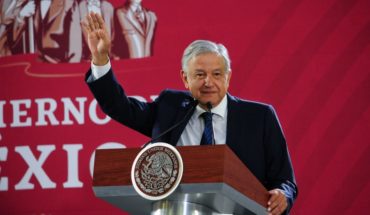It all started with a question of chairs.
These were the hectic days of the French Revolution and the deputies of the newborn Constituent Assembly were discussing the power that King Louis XVI should have in the new France.
The Assembly had about 1,200 members, mostly vociferous, some bullangueros, all with heated spirits.
Counting the votes was a nightmare, so the speaker of the chamber sent to the side of the room the monarchists, who wanted the king to maintain a right of veto, and the opposite of the more radical, who wanted the king to only have a partial veto.
And so, by a simple matter of chance, some ended up on the right and others on the left. And those two words were loaded with a weight that today, more than 230 years later, continues to become a throwing weapon in streets and parliaments around the world.
The king, by the way, ended up without a voice, a vote and even a headless.
But what exactly does left and right mean in politics? What do the terms ultra-left and ultra-right mean? Does that mythical place we call the center really exist?
Like everything in life, theory and practice don’t always coincide.
“Actually,” admits Marta Lorimer, assistant professor at the London School of Economics, “these concepts never existed in a pure way.”
Its meaning has evolved over the years “and, for example, what left and right meant in the 50s is different from what it meant after the irruption of the so-called “third way”, and today it becomes something different again. The lines are blurred, but the truth is that I don’t think they were ever clear,” this specialist in political ideologies told BBC Mundo.
The same goes for extremes.
Traditionally, however, certain ideas and models of government can be pigeonholed into one of those categories of the political spectrum that seek, in an antagonistic way, to achieve social welfare.
And, to understand the extremes, to know what ultra-left and ultra-right mean, we must first define the concepts from which they derive.
Left
A central idea underpins, to a large extent, left-wing thinking: redistribution.
According to this ideology, for society to function better, a welfare state must be created from which all people can benefit. “Society, considers the left, must seek equality as much as possible,” Lorimer says.
The emphasis is precisely on society, considered as the people who form a community. That is why many left-wing parties define themselves as “socialist”.
Broadly speaking, left-wing thinking believes that, in order to benefit society as a whole, wealth must be redistributed.
How is this done? The most extreme may go so far as to advocate the nationalization of goods and the abolition of private property so that “everything belongs to everyone,” as some communist regimes did.
However, the most common way of redistributing wealth is much simpler and more common: taxation.
The left considers that those who have the most in society must contribute more so that basic services, such as education or health, can reach everyone, including those who have hardly anything.
Redistribution, says Guillermo Fernández Vázquez, professor of Social Sciences at the Carlos III University of Madrid, does not only concern wealth: “the political proposals of the left also tend to deepening democracy and seek to redistribute not only money, but also power. That the “many” also have more decision-making capacity.”
Right
If the left has redistribution as its center, the right has made the freedom its flag.
And where the left puts emphasis on society, the right puts it on the individual.
For right-wing ideology, the private enterprise of individuals is important because they consider that this is how wealth is generated. Economic progress is, from this perspective, the social engine.
Instead of influencing the collective, the right “emphasizes more the freedom that is known in political philosophy as ‘negative freedom,’ the freedom that the state doesn’t stop me from doing things, don’t hinder me,” explains Fernández Vázquez.
In this way, the expert argues, the right aspires that “individuals can develop their lives in the least coercive way possible because they understand that this is the way in which being humit will develop further and, if everyone seeks their own benefit, that will ultimately deepen the collective benefit.”
The distribution of wealth, moreover, must be made, according to the right, according to the effort of each individual. “The traditional right considers that people are naturally unequal, and if there are some richer than others it is due to the merit of each one and his effort“, adds Marta Lorimer.
And the center, does it exist?
“It depends on who you talk to,” says the LSE researcher: “they are usually very small parties and, almost always, their opponents accuse them of being right or left.”
Because it is that idealized middle ground, “it is what everyone wants to be, because it is what is best considered,” argues the sociologist, who explains that centrist ideologies usually defend liberal policies in the economic and also in the social.
Progressivism versus traditionalism
If in the economic framework the differences, at least formal, of the left and the right are clear, in the moral plane the issue is a bit blurrier.
Traditionally, the left has identified with a progressive idea of society, in which the diversity, while the right has defended the traditional and conservative values.
This, however, has not always been the case.
The left, points out Fernández Vázquez, does not add to its postulates the progressive program until the 60s of the last century. Until then, his ideas focused on the economic and the democratic aspect, but in the mid-twentieth century a new pillar of leftism as we know it today was added: that which has to do with the moral freedoms, way of life and sexuality.
The sexual revolution is then embraced by the left, while the right, which sees it with more reluctance, adds the sociologist, “considers that all Advances in Sexual Freedom Can Be Dangerous, selfish or dilute the traditional family.”
The answer is no. The communist or Marxist left, or the Soviet regimes, for example, were very left-wing economically, but morally they were not progressive.
In general, explains the sociologist, “all communist regimes that there have been so far have not been at all moral liberals. They did not, for example, hinder women from entering the labour market, but they were not particularly amused by the female sexual revolution.”
Can you be right-wing economically and morally progressive? Of course. And redistributive but traditionalist? Also.
Ideologies are not watertight compartments is the ones you have to buy the complete package.
Left and ultraleft
While morally both ideologies hardly differ in their postulates – both advocate a diverse society – the main ones differences between the traditional left and the extreme left or ultra-left lie in the economic.
The left and political systems such as social democracy have accepted economic liberalism and capitalism – in which the functioning of the state revolves around capital – “and what they seek is introduce changes and reforders for capitalism to redistribute wealth and there is a minimum of social and economic equality,” says Guillermo Fernández Vázquez.
The far left, however, “is much more critical of capitalism and often defines itself as anticapitalist“, explains the researcher. In their programs the word “nationalize” or “stateize” usually abounds, since they intend to take certain aspects of life and the economy out of the market.
In addition, the radical left “tends to have much more negative attitudes towards international institutions“, says Marta Lorimer. This can be seen in the Euroscepticism of ultra-left parties in Europe, for example, or opposition to organisations such as NATO.
Right and ultraRight
On this side of the political spectrum, the concept of national identity it’s the one that makes the difference.
In general, right-wing and far-right parties share a liberal approach to economics and do not tend to differentiate themselves much.
The radical right is more morally conservative than the conventional right, and puts much more emphasis on the issues they have. what to do with, for example, the euthanasia, abortion or the traditional family. The classical right, however, accentuates other issues such as the economic management.
What they differ most, argues Fernández Vázquez, “is what the Dutch political scientist Cas Mudde calls”nativism“.
Where the traditional right accepts the arrival of immigrants – as long as they do so through a regular route – and does not believe that there are cultures that are completely incompatible with the national culture of each country, the extreme right “considers that the nations are houses, in which you have to put walls, close doors, “analyzes the sociologist.
For them, he continues, “nations have legitimate owners and heirs, who are the ‘native’ group, as opposed to external individuals who can only enter as guests.” These parties are usually defined as “anti-immigration“.
Faced with this position, the liberal vision of nations considers that these are something built, something that citizens are doing, they are not essences of the past that we inherited and that we must maintain against the invaders.
However, this argument, which was not traditionally part of the traditional principles of the right, more and more has become part of his speech.
“The right is increasingly inclined to the extreme right, they have begun to copy their messages and have moved dangerously towards their postulates,” reasons the LSE researcher.
Is the same with the left and the far left? For some, too.
As Guillermo Fernández Vázquez explains, “there is a part of the left that considers that their parties have forgotten the people with a World Cup agenda, that they have stopped representing ordinary people, who are told, for example, that eating meat is wrong, that it is not right for their father to hunt on weekends in the village… They criticize that they no longer defend the workers but the ‘progressives’.”
The axis of populism
On this political spectrum, how does populism fit in?
If the left and the right exist on a horizontal axis, populism completely disrupts this dynamic and introduces a vertical logic: up and down, people and elite.
But, beware, because, although it shakes it, it does not eliminate it completely: there is a right-wing populism and a left-wing populism.
In both the question that is asked is “who are you with, with the people or with the elites?”, explains the expert from the Carlos III University. Howeverwhat is the “people” for each of them?
“Left-wing populism often identifies those at the bottom with humble, hard-working people; while right-wing populism thinks that the people are the people who have a way of being that they consider “of a lifetime”, such as the “redneck” in the United States, for example, “reasons Fernández Vázquez.
The chair dance of that French Constituent Assembly is still as vibrant today as that first day of 1789. What’s yours?
Follow us on





